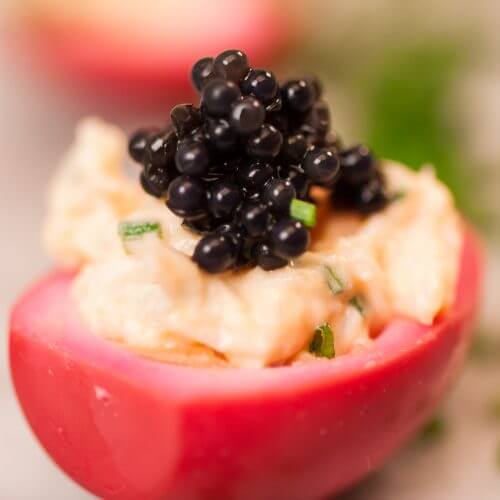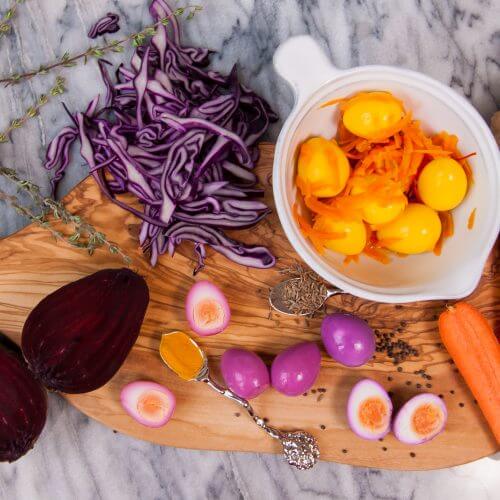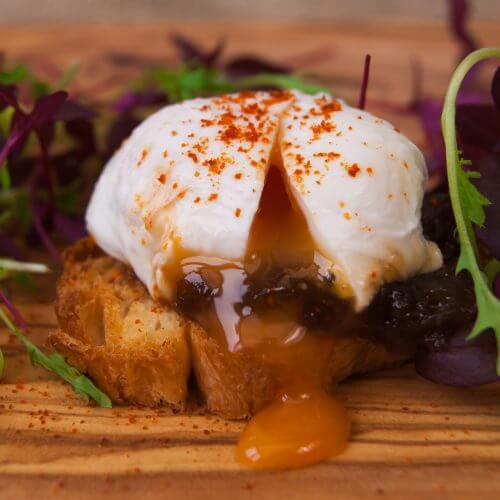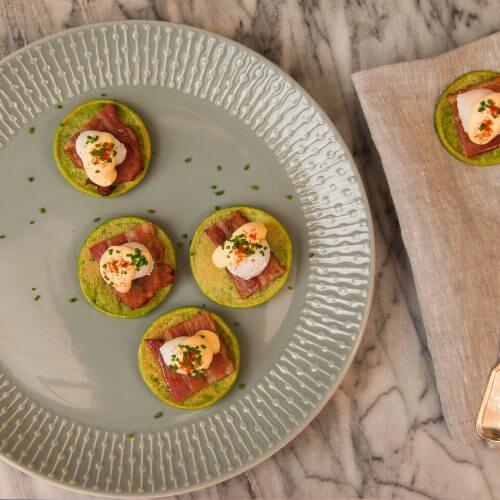Quail Egg
It’s easier than you might think to get perfect results when cooking with quail eggs. As always, it pays to take a little time to understand how they work.
Hardboiled Quail Egg
- Make sure the eggs are room temperature, so they don’t crack in the hot water
- Bring a pan of water to a boil and lower the eggs in all at once with a slotted spoon
- Simmer for 2 minutes, lift out of the water and lower into a bowl of cold water
- Leave them to stand for a couple of minutes, but don’t let them cool down completely
- Gently tap or roll the eggs on your work surface to crack the shall all over
- Start peeling from the bottom of the egg
- Try and get under the membrane between the shell and the white, which will make them easier to peel
- Rinse in water and they are ready
Poached Quail Egg
- Bring a pan of water to boil (around 500ml for 12 eggs) and add a tablespoon of white wine vinegar
- Pour 200ml of room temperature water into a bowl with a teaspoon of white wine vinegar
- Using a small serrated knife, open the quail eggs and get them into the bowl with water and vinegar
- No need to worry about any bits of shell
- Once the water in the pan is boiling, pour the contents of the bowl in, all at once
- Bring to a simmer and cook for 60-90 seconds
- To check whether the eggs are ready, simply lift one out with a slotted spoon and gently prod it
- The egg yolk should still be nice and soft, with the egg white set around it
- Once you are happy with them, lift them all out and place on a paper towel to dry them off a little
- Trim off any stringy bits of egg white and serve immediately
Poached Quail egg with red onion marmalade and brioche croustade
Fried Quail Egg
Heat a large glug of oil in a non stick pan
For individual fried eggs, fry in batches
Open using a small serrated knife and carefully pour straight into the hot oil
They will take no more than a minute to cook
Remove from the pan
You can use a small cookie cutter to cut into neat circles
Salmon Tartare & Fried Quail Egg



